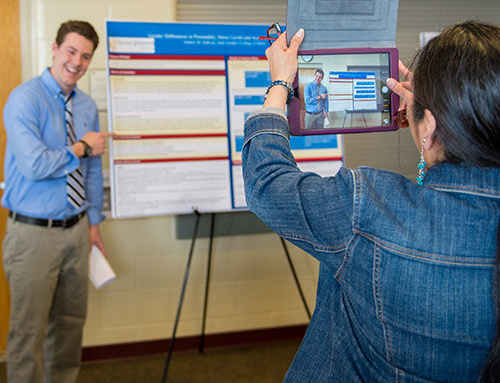 A new fund finds a sustainable path to encourage and maintain green initiatives.
A new fund finds a sustainable path to encourage and maintain green initiatives.
Along with their environmental benefits, green practices often come with a high price tag and take many years to recoup their initial investments. To combat these financial burdens, and to make sure the College continues its environmental efforts, a new investment strategy was announced this spring. This Green Revolving Fund has sustainable financial and environmental goals in mind.
The Green Revolving Fund (GRF) is an account that finances energy efficiency, renewable energy, and sustainability projects on campus. The fund becomes revolving when project savings are returned to it, and become available to finance other green projects.
“The fund provides capital for specific projects that have a demonstrated ability to reduce our environmental impact and can repay the fund with cost savings within seven years,” says Yvonne Berry, the College’s chief financial officer. “Portions of these savings are used to support a subsidiary Green Community Fund that finances smaller community-led sustainability projects, which may lack monetary savings but are in clear alignment with the College’s sustainability objectives.”
At its heart, the GRF is a motivational tool for the College. The fund will finance innovative projects that reduce the College’s environmental impact, improve the educational environment, and generate financial returns while engaging students, staff, faculty, and administrators in the decision-making and implementation process. And that’s important, because this fund, like all initiatives at the College, furthers the broader academic mission of the College while reducing its greenhouse gas emissions.
LE(A)Ding the Charge
As the first project administered by the Green Revolving Fund, nearly 4,000 light fixtures across campus are being upgraded to LED fixtures, or light emitting diodes.
3,800 The number of fixtures on campus being replaced with LEDs.
25,000 Hours The life expectancy for an LED fixture, versus 10,000 hours for a 15W compact fluorescent (CFL) bulb and 1,000 hours for a traditional 60W incandescent light bulb.*
500 Tons The reduction in the College’s CO2 emissions each year upon complete LED transition.
24% The resulting reduction in electricity consumption this upgrade provides.
$90,000 The annual savings in operating costs this project will produce for the College.
*Source: US Department of Energy
 A new fund finds a sustainable path to encourage and maintain green initiatives.
A new fund finds a sustainable path to encourage and maintain green initiatives.


